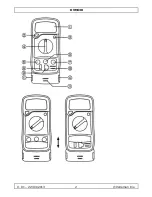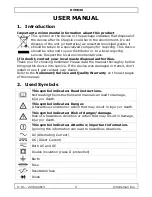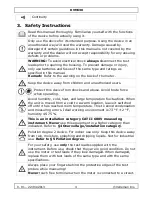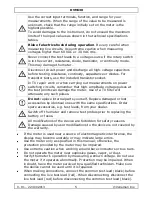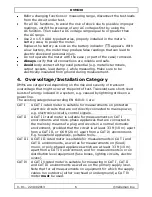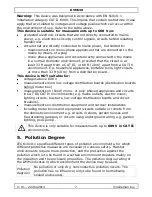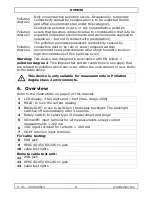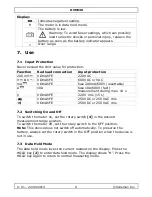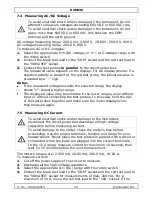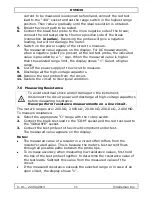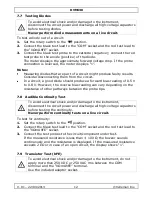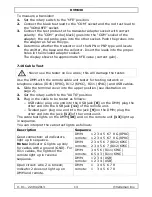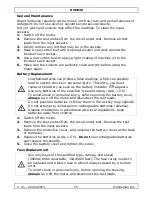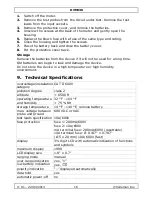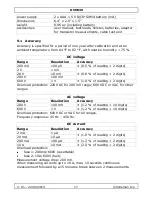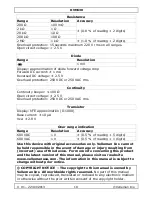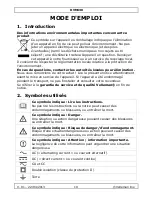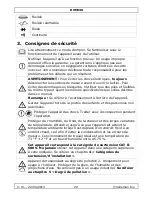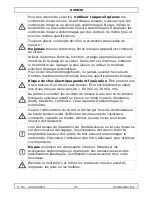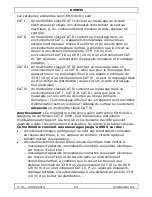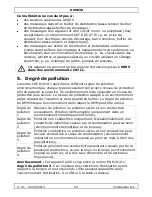
DVM630
V. 01 – 22/04/2013
10
©Velleman Inc.
7.4
Measuring AC/DC Voltage
To avoid electrical shock and/or damage to the instrument, do not
attempt to measure voltages exceeding 600 VDC or 600 VAC rms.
To avoid electrical shock and/or damage to the instrument, do not
apply more than 600 VDC or 600 VAC rms between the COM
terminal and the earth ground.
DC voltage measuring range: 200.0 mV, 2.000 V, 20.00 V, 200.0 V, 600 V.
AC voltage measuring range: 200.0 V, 600 V.
To measure AC or DC voltages:
1.
Select the appropriate V
(DC voltage) or V
(AC voltage) range with
the rotary switch.
2.
Connect the black test lead to the “COM” socket and the red test lead to
the “VΩmAhFE” socket.
3.
Connect the test probes
in parallel
to the circuit under test.
The measured value appears on the display. For DC measurements: if a
negative polarity is present at the red test probe, the indicated value is
preceded by a “–” sign.
Notes:
If the measured voltage exceeds the selected range, the display
shows “1”. Select a higher range.
The displayed value may be unstable in the lower ranges, even without
input or without connecting the test probes. In this case, hold the tips
of the test probes together and make sure the meter displays zero;
then measure again.
7.5
Measuring DC Current
To avoid electrical shock and/or damage to the instrument,
disconnect the circuit power and discharge all high-voltage
capacitors before measuring current.
To avoid damage to the meter, check the meter‟s fuse before
proceeding. Use the proper terminals, function and range for your
measurement. Never place the test probes in parallel with a circuit or
component when the leads are plugged into the current terminals.
In the 10 A range, measure current for maximum 10 seconds, then
wait for 15 minutes before the next measurement.
The meter‟s ranges are: 2.000 mA, 20.00 mA, 200.0 mA, 10.00 A.
To measure current:
1.
Cut off the power supply of the circuit to measure.
2.
Discharge all the high-voltage capacitors.
3.
Select the appropriate A
(DC) range with the rotary switch.
4.
Connect the black test lead to the “COM” socket and the red test lead to
the “VΩmAhFE” socket for measurements of max. 200 mA. For a
maximum of 10 A, move the red test lead to the “10A” socket. If the


